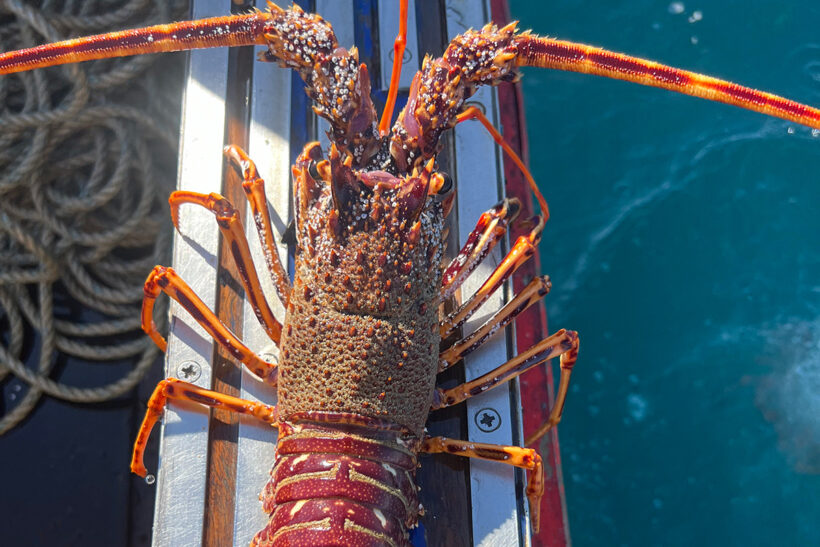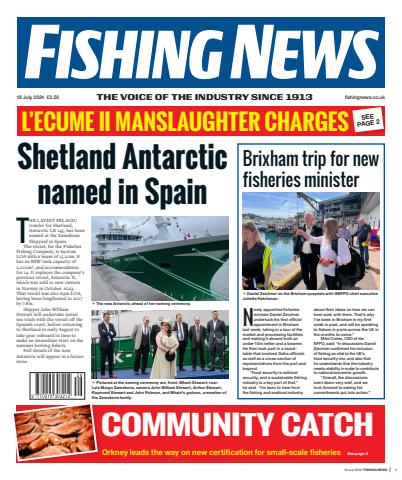Inshore fishermen in the South West reacted with mixture of anger, frustration and despair last week to the announcement of an extended closed season for crawfish for all UK and EU vessels.
Social media comments expressed a range of views about the dates of the closure, but all were in agreement that it would do little to conserve a fishery that they say will move rapidly from boom to bust unless there is a rethink.
Quoting the singer Adele in a letter to the MMO, one crawfisherman said: “This is the end, hold your breath and count to 10. The sky is falling, and we will crumble!”
The fishery has seen huge expansion in the last decade, with the number of active vessels in the fishery rising from 97 a decade ago to 161 in 2023, and reports that several much larger crabbers have entered the fishery this year with significant amounts of new gear.
The closure will take effect through a licence variation, banning the retention of crawfish in area VII to all UK and EU vessels, from 16 December, 2024 to 31 May, 2025.
The closure, the MMO says, is designed to protect stocks, especially berried females. It will, it says, reduce impacts on settling juveniles, and also reduce damage and mortality to crawfish taken in bad weather or after long soak times.
As well as an online consultation on a range of options for a potential closed season in future years, which closed on 18 August, the MMO also held four drop-in sessions in South West crawfish ports, involving face to face meetings with working fishermen, both individually and in groups.
There were 31 written responses to the consultation, mainly from inshore and offshore vessel owners, with a small majority in favour of a longer closed season, either starting earlier in the autumn, or extending into June.
The first ever closed season ran from 5 February until 30 April, 2024, following a long campaign by many inshore crawfishermen for measures to prevent what they expected would otherwise be a ‘boom and bust’ fishery. Many had long adhered to the CFPO voluntary MLS of 110mm, well ahead of the increase in 2023 that finally saw the national landing size increased from 95mm to 110mm.
The 5 February closure date this year was because the UK is required under the terms of the TCA to give the EU 45 days’ prior notice of any legislative changes. This prevented the closure from taking effect in December 2022, as had been planned. An MMO impact assessment on the initial closure concluded that it had had ‘no measurable impact’ on the fishery.
Of rather more concern was an acknowledgement by the MMO of widespread reports of undersized crawfish being landed. Whilst the rise to 110mm MLS had no economic impact on vessels fishing within the Cornwall IFCA district, those fishing outside did report a drop in landings. One fisherman suggested that the increased MLS may have attracted some fishing effort inside the 6nm area, where average sizes of the craws might have been higher.
The MMO also suggested that the drop in prices for crawfish, from £24/kg to £18/kg, over the past year is likely due to oversupply across the French, Channel Islands and UK fisheries – which itself could be seen as an issue for the longer-term sustainability of the fishery.
The 16 December closure date for this year was chosen as it coincides with the last neap tide in Newlyn, allowing those vessels still with gear on the grounds to fish for the Christmas market.
But many inshore fishermen have commented that 16 December is far too late in the season for nets to be out on the grounds, with autumn storms likely to lead to long soak times, lost gear and damaged crawfish. Andrew Pascoe, chairman of the South West Handline Fishermen’s Association, who also has a long history in the crawfish fishery, told FN: “The fishery should have been closed from the end of October at the latest. The 16 December date is a recipe for unnecessary damage to the fishery.
“The crawfish fishery was already in danger of collapsing before this. I don’t have the words to show how unhappy I am, and what a monumental blow this is not only for the stock but for the inshore sector as a whole. Over 70% of craw fishermen supported a closed period that the MMO once again chose to ignore.
“The knowledge we’ve gained from the last 40 years of fishing, witnessing fisheries collapse, has all been in vain. We need a management organisation that manages, and doesn’t just try to please everyone all of the time.”
Nathan de Rozarieux, an outspoken proponent of the need to conserve the fishery for many years, said that social media was ‘red hot’ after the announcement, with a lot of very disappointed fishermen.
“This is a fudge, with the MMO choosing a line halfway between what larger vessels wanted, and the 80% of boats in the fishery who see themselves as being thrown under the bus,” he told FN. “Landings may be up the last two years, but catch rates have actually been dropping.
“Failure to implement a full range of management measures, including a genuine closed season that will protect the fishery, in favour of a compromise that will have no real impact is, many fishermen here feel, just confirming the death of the fishery – just as we saw a generation ago.”






